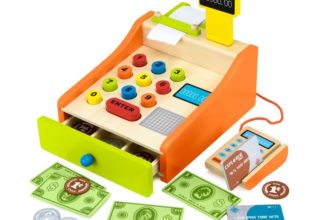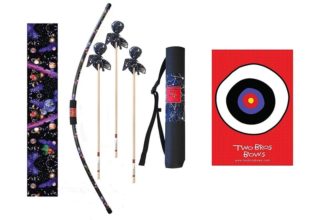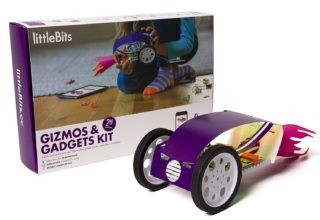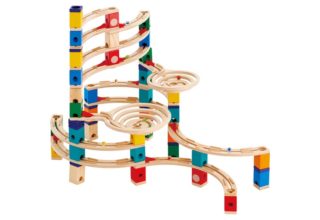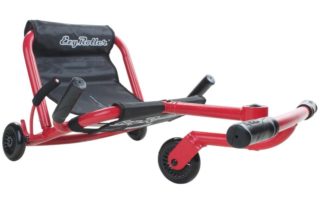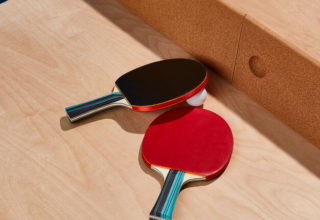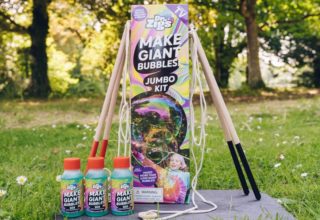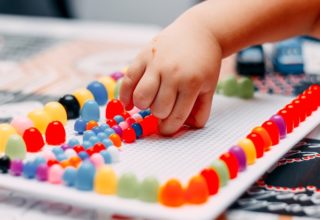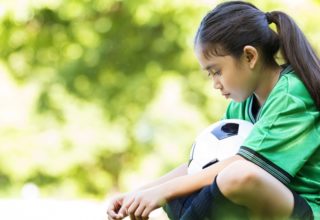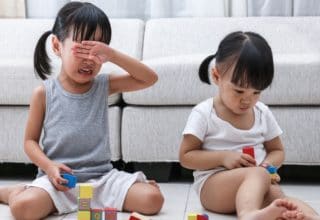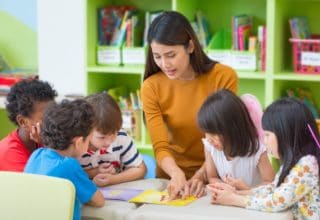A reversible puzzle? So clever! One side is set in Spring, the other in Fall – both have delightful patterns featuring fairytale favorites. Puzzles help develop critical skills such as the concept of a whole and its parts, shape recognition, concentration, critical thinking and visual perception.
3D open-ended mechanics and creativity. Keep tap tapping that logic and hand-eye coordination with this and this.
Very cool, very S.T.E.A.M. Bring 2D concepts into large-scale 3D. Foster creativity, experimentation and patience using modular + magnetic constraints....
Pretend, play and learn – math! A playful way to sharpen number and arithmetic skills.
Fun-yet-safe. A positive way of exploring power play themes.
Encourage creativity and reasonable risk with real working tools. Inspired by the Montessori way of learning and designed in France....
The ultimate app-enabled invention toolbox. Designed by MIT graduate and TED Senior Fellow Ayah Bdeir; featured at the MOMA and...
A puzzle and play set all in one! Fun fact: 3D spatial skills are foundational for engineering and design.
Hands-down, the coolest coloring book..and the longest in the world (!!) Hours of downtime fun that cleverly folds into accordion-style...
An ideal platform for S.T.E.A.M education and spatial + kinetic awareness. Praised by the Wall Street Journal for how it...
New take on a classic scooter. No pedals! Move this racing machine with alternating leg movements on the foot bar.
Ping pong anywhere and everywhere! This inventive corknet is sturdy, yet portable. A fun game for gross motor and spatial...
Beyond giant play. The one and only jumbo bubbles kit that comes with two unique wands and the Dr. Zigs...
*Yet* – Three letters that may change your child’s outlook on life, even among the youngest learners. Learn how the...
Taking time to connect with nature has a long-lasting impact on our health, learning and emotional well-being. Here is what...
When all the other pieces – like grasp and strength – are in place, it may be time to practice....
Little hands often struggle to hold a pencil, especially when their muscles need some building. Fortunately there are many fun...
Your go-to schedule and plan for balancing play, learning and structure for large amounts of time with your child (i.e.,...
Consider this your guide and script for how to respond and deepen your child’s understanding of math. Learn how to...
If you want to raise a child who grows up to be a resilient, problem-solving, persistent and adaptable adult, let...
Sibling fighting and rivalry is normal and, in most cases, healthy. Learn how to resolve sibling conflict in 5 simple...
ABCs, colors, numbers, sight words…parents have heard of the ‘push-down’ of academic skills – that Kindergarten has a lot of...
Learning to write is a hallmark in a child’s education journey. It empowers them to express themselves and their talents....
“Gratitude is not just a feeling outside your control that arrives willy-nilly. It’s more like a radio channel: you can...
“I think I have a sense for Kindergarten readiness, now how can I support my child to get there?” Keep...




